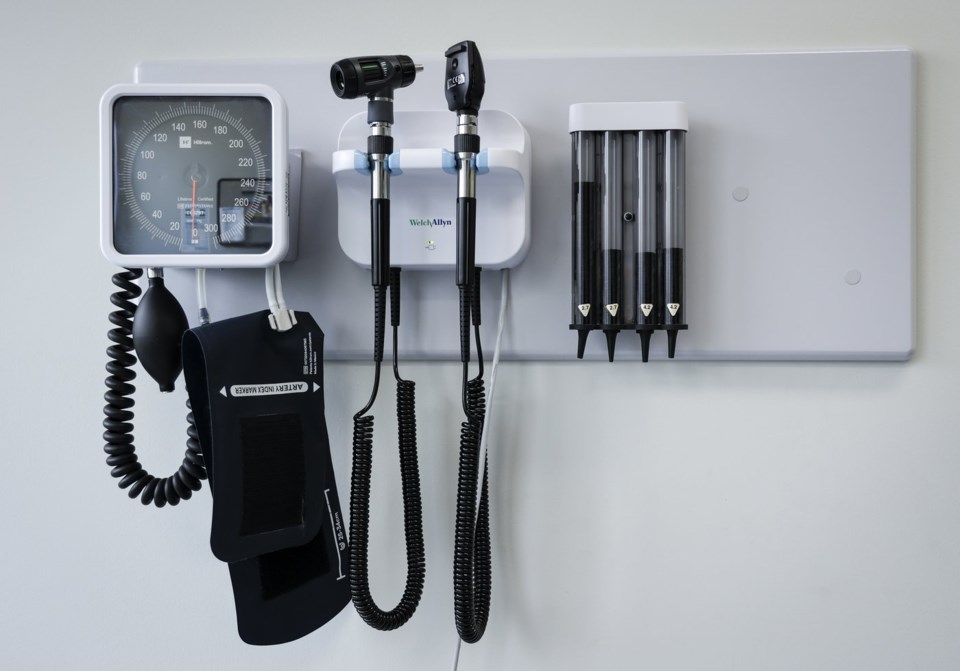The Canadian Paediatric Society is urging primary-care providers to screen all adolescent patients for eating disorders during routine checkups and other medical visits.
The society released new guidelines in a position statement Thursday to help pediatricians, family doctors and nurse practitioners diagnose cases of eating disorders, which have increased since the COVID-19 pandemic.
Wait times for eating disorder programs have grown dramatically and health-care providers in the community can help by catching eating disorders early and working with patients and their families to change eating behaviours, said Dr. Holly Agostino, senior author of the guidelines.
"Since the pandemic, we've had such an increase in eating disorder diagnoses, hospitalizations, patients' relapses in cases that were already diagnosed, and it put a big strain on the system," said Agostino, who is the medical director of the eating disorder program at Montreal Children's Hospital.
"We hope that this statement helps community practitioners build their confidence in eating disorders," she said.
"They have that longitudinal relationship with these families. They have so much to add to the care."
Eating disorders are the third most common chronic illness in adolescence after obesity and asthma, Agostino said, but doctors sometimes don't think of them — especially anorexia — in patients who don't appear to be too thin.
"It's not enough to just look at a patient and say, 'Oh, they're not skinny enough to have anorexia.' I have obese patients in my practice who have anorexia, so the number on the scale is not what makes the diagnosis," she said.
"It's really about the cognitions, the thoughts, the obsessions around food, the fears around weight."
Eating disorders in male and racialized patients are also missed, she said.
Primary-care providers should also know that eating disorders are on the rise in younger patients, including pre-teens, said Agostino, also author of a 2021 study that found newly diagnosed anorexia cases in sa���ʴ�ý rose during the first wave of the pandemic to 40 a month, from 24 a month.
Studies show that primary-care providers are the first health-care professional most adolescents with eating disorders see. Patients sometimes report "vague symptoms such as abdominal pain, fatigue or menstrual abnormalities," the pediatric society's guidelines say.
The initial screening process can be quick, Agostino said, using a few questions about weight changes, exercise habits and body image.
If an eating disorder is diagnosed, primary-care providers can refer patients to specialized family-based treatment if the service is available, the guidelines say.
If it's not immediately available, primary-care providers are encouraged to apply the principles of family-based treatment themselves, the guidelines say.
Agostino said that means "putting parents in charge of re-nourishing their kids and empowering parents to feel like they can take back control over food in their house."
That could involve supervising their kids while they eat and monitoring their exercise habits, including restricting exercise or sports involvement if they aren't eating enough, she said.
But it's key that both the parents and the patient view the eating disorder as separate from the adolescent, Agostino said.
"We start to shift the language and the philosophy around food at home," she said.
"You're not mad at your child for not eating the supper — you're mad at the eating disorder," Agostino said.
"We tell the patient, 'you know, if your parents are putting limits around your activities and that annoys you, that angers you, that's not your parents' fault. That's your eating disorder's fault."
The guidelines also recommend a daily multivitamin, calcium and vitamin D for all adolescent patients who are restricting their food intake due to an eating disorder.
Patients with eating disorders should also be regularly assessed for malnutrition, including changes in vital signs and medical complications.
Severe malnutrition, dehydration, slow heartbeat, low blood pressure and low body temperature are symptoms that indicate a patient may need to be hospitalized, they say.
Some patients with eating disorders also have other psychiatric conditions such as depression, anxiety and obsessive-compulsive disorder which may require referral to a psychiatrist, Agostino said.
This report by The Canadian Press was first published June 6, 2024.
Canadian Press health coverage receives support through a partnership with the Canadian Medical Association. CP is solely responsible for this content.
Nicole Ireland, The Canadian Press



